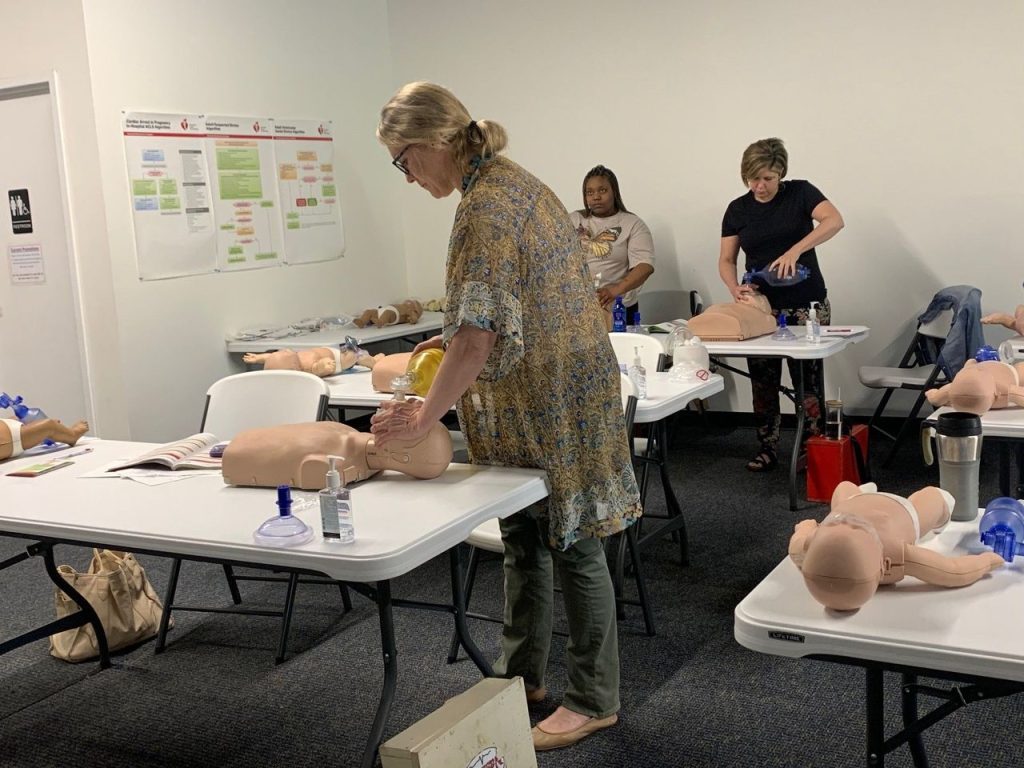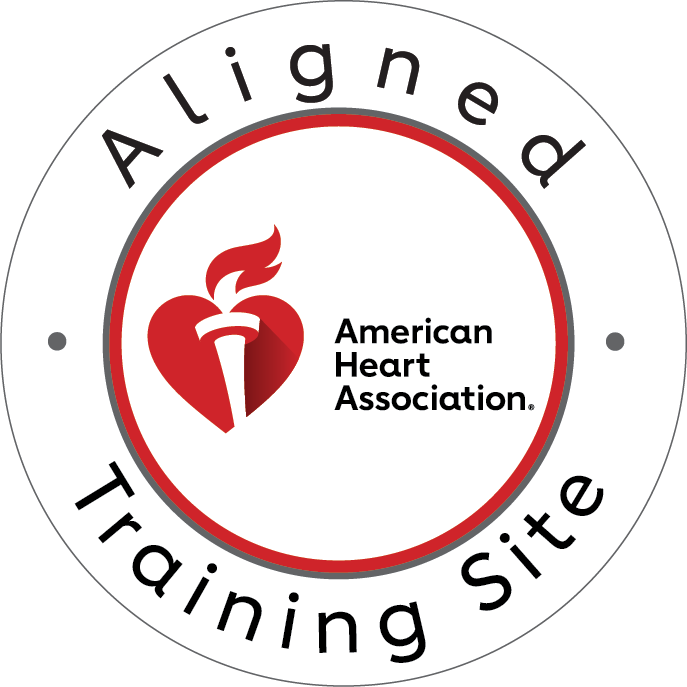I. The Importance of BLS and the Role of the AHA
Basic Life Support (BLS) is a critical skill set that can make the difference between life and death in emergencies. BLS encompasses essential techniques such as cardiopulmonary resuscitation (CPR) and the use of an automated external defibrillator (AED), aimed at sustaining life until professional medical help arrives. The importance of BLS certification cannot be overstated, as it equips individuals with the knowledge and skills necessary to respond effectively during cardiac emergencies.
The American Heart Association (AHA) plays a pivotal role in setting the standards for BLS certification. As a leading authority in cardiovascular care, the AHA’s guidelines and training programs are designed to ensure that those who are certified are prepared to deliver high-quality care in emergencies. This article delves into the AHA standards for BLS certification, exploring their history, core elements, and the certification process itself.
II. Overview of AHA Standards
The standards set by the AHA for BLS certification have a rich history and have evolved significantly over the years to incorporate the latest scientific research and best practices in emergency cardiovascular care. The primary purpose of these standards is to maximize the effectiveness of life-saving interventions and improve survival rates for individuals experiencing cardiac arrest or other life-threatening conditions.
The AHA standards are comprehensive and cover a wide range of essential skills and knowledge areas. Key components include high-quality CPR, proper use of AEDs, recognition of cardiac arrest, and techniques for delivering rescue breaths. These guidelines are designed to be straightforward to follow, ensuring that individuals can perform them effectively even under the stress of an emergency.
III. Core Elements of AHA BLS Certification
The core elements of the AHA’s BLS certification program focus on the critical skills needed to perform life-saving procedures. These include:
CPR (Cardiopulmonary Resuscitation)
This involves manual chest compressions and rescue breaths to maintain circulation and oxygenation in a person who has suffered cardiac arrest. The AHA standards provide detailed instructions for performing CPR on adults, children, and infants, recognizing that techniques vary based on the victim’s age and size.
- Adult CPR Techniques: Emphasis on achieving the correct depth and rate of chest compressions, as well as proper hand placement.
- Child and Infant CPR Techniques: Adjustments in compression depth and the use of one hand or two fingers for infants, reflect anatomical differences.
AED (Automated External Defibrillator)
AEDs are crucial for restoring a normal heart rhythm in cases of sudden cardiac arrest. The AHA guidelines outline the steps for using an AED effectively, including how to operate the device and ensure safety during defibrillation.
- Importance of AED: Explains why AEDs are vital in cardiac emergencies.
- Steps for Using an AED: Detailed instructions on deploying an AED, including pad placement and delivering shocks.
Recognition of Cardiac Arrest
Training on how to identify the signs of cardiac arrest quickly, ensuring prompt intervention.
High-Quality Chest Compressions
Stressing the importance of maintaining adequate compression depth and rate, minimizing interruptions, and allowing full chest recoil.
Rescue Breaths
Techniques for providing effective ventilation to the victim, including mouth-to-mouth and using barrier devices.
By mastering these core elements, individuals can significantly increase the chances of survival and recovery for those experiencing cardiac emergencies.
IV. AHA Certification Process
The process to achieve AHA BLS certification is structured to ensure that participants gain a thorough understanding of the necessary skills and can perform them confidently in an emergency. Here’s a breakdown of the certification process:
Eligibility Requirements
AHA BLS certification is open to healthcare providers, first responders, and anyone who wants to be prepared to handle cardiac emergencies. There are no strict prerequisites, making the training accessible to a wide audience.
Training Programs and Courses:
- Online vs. In-Person Training: The AHA offers both online and in-person courses to accommodate different learning preferences. Online courses provide flexibility, allowing learners to complete theoretical components at their own pace. In-person training, on the other hand, offers hands-on practice and direct feedback from instructors.
- Blended Learning Options: Some programs combine online coursework with in-person skills sessions, providing a balanced approach that maximizes both convenience and practical experience.
Skills Testing and Assessment
Regardless of the format, all BLS certification courses include a practical skills test. Participants must demonstrate proficiency in CPR, AED use, and other core skills. This assessment ensures that they can perform life-saving techniques correctly and effectively.
Certification Validity and Renewal
BLS certification is typically valid for two years. To maintain certification, individuals must complete a renewal course before their certification expires. This ensures that their skills remain current and in line with the latest AHA guidelines.
V. Importance of Adhering to AHA Standards
Adhering to AHA standards for BLS certification is crucial for several reasons:
Ensuring High-Quality Care
AHA standards are based on the latest research and best practices in emergency cardiovascular care. Following these guidelines ensures that individuals provide the highest quality care possible, increasing the chances of survival and positive outcomes for victims of cardiac emergencies.
Legal and Professional Considerations
Many employers and regulatory bodies require AHA BLS certification for certain positions, particularly in healthcare. Adhering to these standards helps professionals meet legal and regulatory requirements and enhances their employability.
Impact on Survival Rates
Research shows that early and high-quality BLS can significantly improve survival rates for cardiac arrest victims. By following AHA standards, individuals contribute to better overall outcomes in emergencies.
VI. Updates and Revisions to AHA BLS Standards
The AHA is committed to continually improving its guidelines to reflect new research and technological advancements. The process of updating standards involves a rigorous review of the latest scientific evidence and input from experts in the field.
Process for Reviewing and Updating Standards
The AHA regularly reviews the latest studies and clinical trials to determine if updates to the guidelines are needed. This process ensures that the standards remain at the forefront of emergency cardiovascular care.
Recent Changes and Their Implications
Keeping up with recent changes is essential for certified individuals. For example, updates might include new compression-to-ventilation ratios, modified AED usage protocols, or revised techniques for recognizing and responding to cardiac emergencies.
Staying Informed on Current Guidelines
The AHA provides various resources to help certified individuals stay informed about current guidelines, including newsletters, online updates, and continuing education opportunities. Regularly reviewing these resources helps ensure that their skills and knowledge remain up to date.
By adhering to these standards and staying informed about updates, certified individuals can provide the best possible care in emergencies, significantly impacting the outcomes for those they assist.
VII. Practical Tips for BLS Certification Success
Achieving and maintaining AHA BLS certification requires dedication and preparation. Here are practical tips to help individuals succeed in their certification journey:
Preparing for the Course:
Review Basic Anatomy and Physiology: Understanding the basics of how the heart and lungs function can enhance comprehension during training.
Familiarize Yourself with AHA Guidelines: Review the latest AHA BLS guidelines and algorithms before starting the course to become familiar with the steps and techniques.
Key Skills to Focus On:
- Mastering CPR Techniques: Practice chest compressions and rescue breaths regularly to ensure proficiency and confidence.
- AED Operation: Familiarize yourself with different types of AEDs and practice using them according to AHA protocols.
- Recognizing Cardiac Arrest: Learn the signs and symptoms of cardiac arrest to respond promptly and effectively.
Common Mistakes to Avoid:
- Improper Hand Placement During CPR: Ensure hands are positioned correctly on the sternum for effective compressions.
- Inadequate Compression Depth: Maintain compressions at least 2 inches deep for adults to optimize blood flow.
- Failure to Clear the Area During AED Use: Ensure the victim and rescuers are clear of the victim before delivering a shock.
VIII. Resources for Further Learning
Continuing education and staying updated on BLS techniques are essential for maintaining certification and improving skills. Here are valuable resources for further learning:
Recommended Reading and Materials
- Textbooks and manuals published by the AHA provide in-depth explanations of BLS techniques and guidelines.
- Medical journals and articles offer insights into the latest research and advancements in emergency cardiovascular care.
Online Resources and Tools
- The AHA’s official website (heart.org) offers online courses, updates on guidelines, and resources for healthcare providers and the general public.
- Interactive training videos and simulations provide hands-on practice and reinforcement of BLS skills.
Continuing Education Opportunities
- Attend workshops, seminars, and conferences focused on emergency medicine and BLS to stay current with industry trends and best practices.
- Participate in mock drills and simulations to enhance readiness and teamwork skills in emergencies.
IX. Conclusion
Understanding and adhering to AHA standards for BLS certification is not just a professional requirement but a moral obligation to ensure that individuals in cardiac distress receive the best possible care. By mastering the core elements of BLS, staying informed about updates, and continuously practicing and refreshing skills, certified individuals can make a significant difference in saving lives within their communities.
If you’re looking to obtain BLS Certification in Kansas City or CPR Certification in Kansas City, consider enrolling at CPR Kansas City. As an American Heart Association training site, CPR Kansas City offers initial certifications and renewals in BLS for Healthcare Providers, ACLS, PALS, and CPR and First Aid courses. All classes are stress-free and hands-on, providing you with the practical skills and confidence needed to respond effectively in emergencies. Invest in BLS and CPR certification today with CPR Kansas City to be prepared and ready to save lives. Best CPR in Kansas City!





